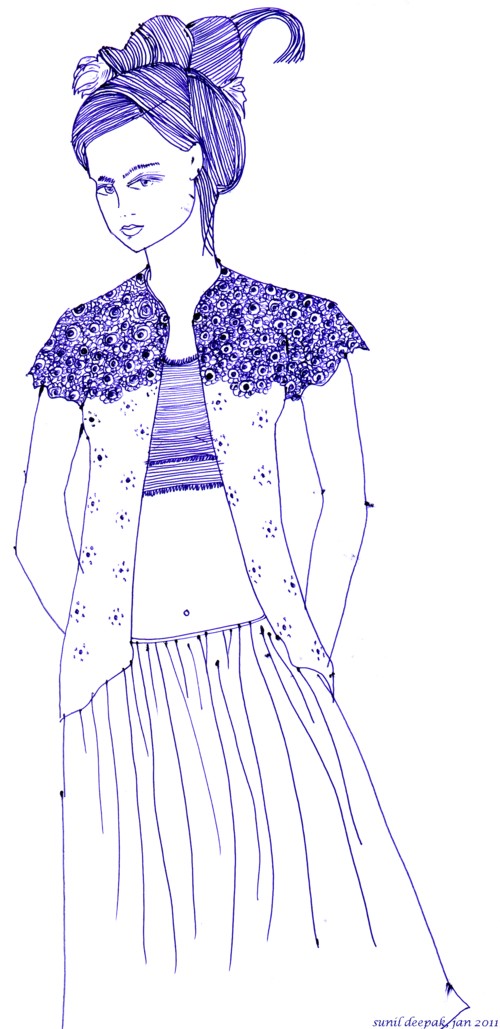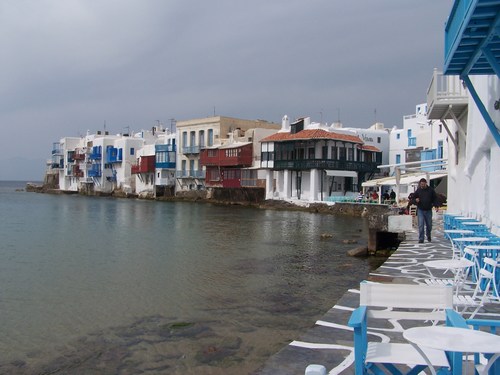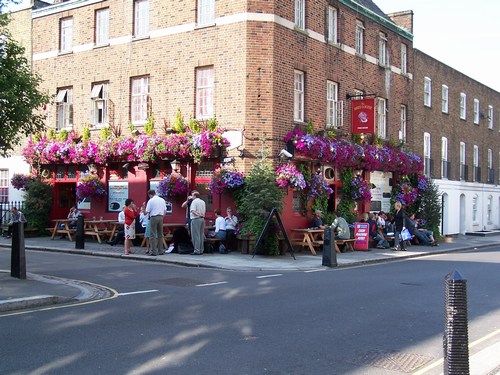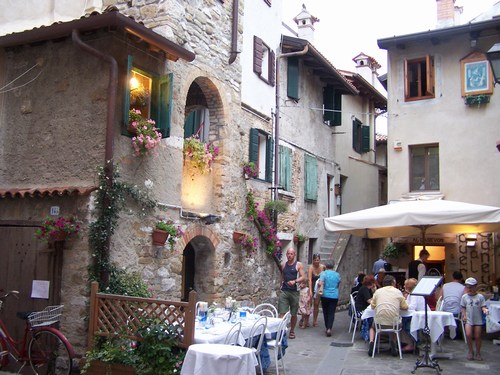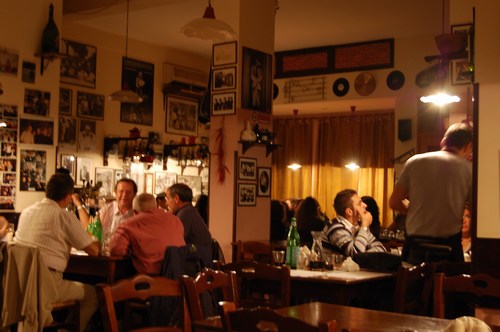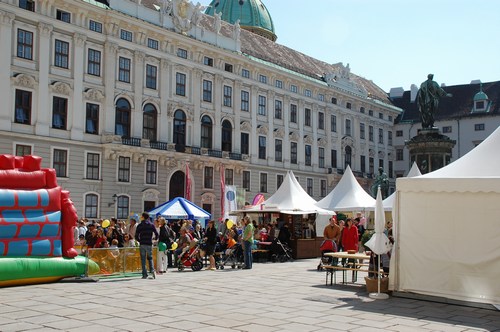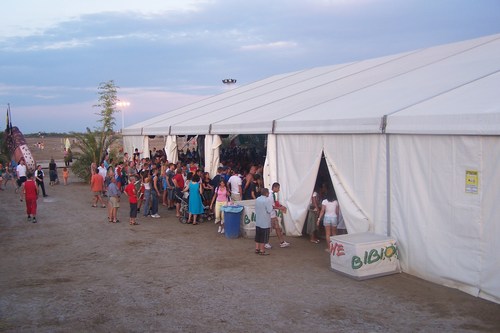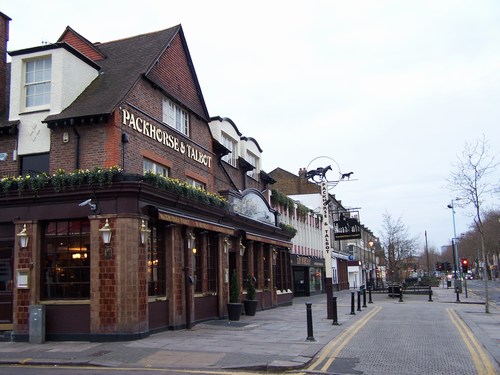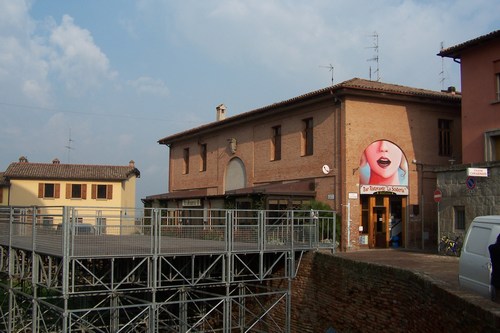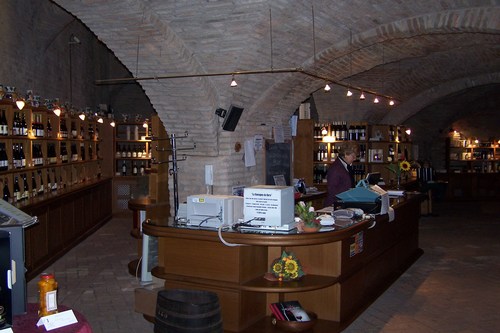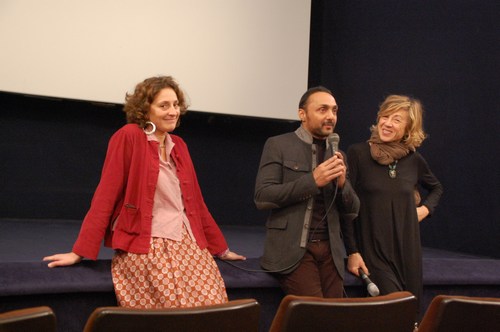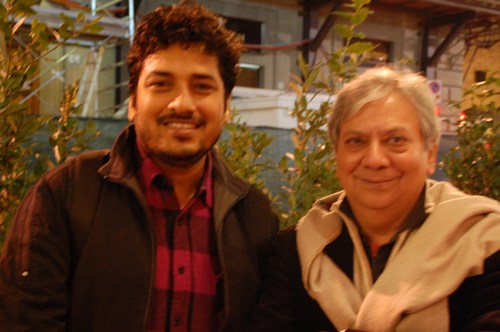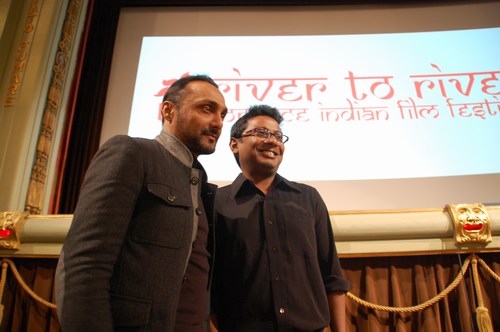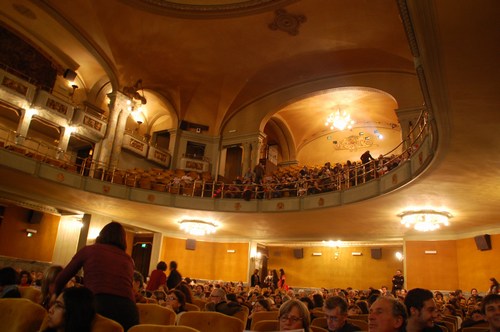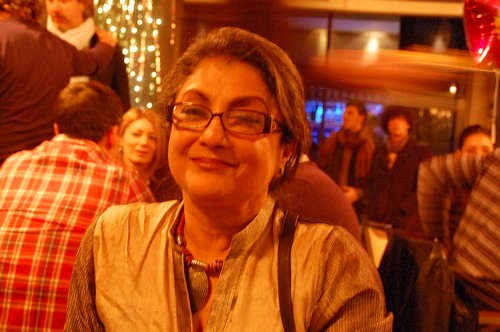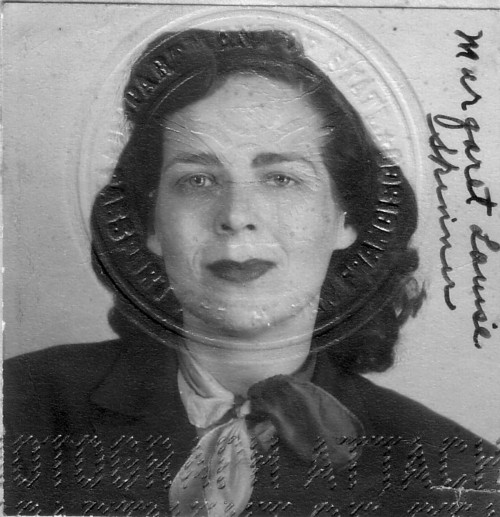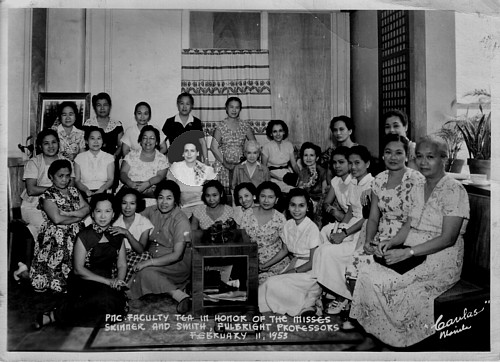This is part 2 of an article in three parts, about the ancient world and Indian history in ancient Hindu sacred books, based on the works of eminent Hindi writer, Acharya Chatur Sen. Part one of this article introduced the writings of Sen. This second part examines the context of writings by Sen. The third part presents the events described by Chatur Sen in his book, Vayam Rakshamah.
All writers need to do research, when they are writing about something with which they are not familiar. Thus, for all historical novels, writers need to research that particular historical period. Probably Acharya Chatur Sen started his research when he decided to write about "Vaishali ki Nagarvadhu", or perhaps the research was started for some other book, and then it led to writing of this book.
If there was ten years of research in the ancient Hindu sacred books, you don't really see it in "Vaishali ki Nagarvadhu", because the book is true to its fiction form. The result of the long studies is reflected in the background and characterization, but it is not flaunted.
Six years later, in 1955, when "Vayam Rakshamah" came out, the situation had changed. The book is presented as historical fiction about the life of Raavan, son of an Aryan, Polsatya muni, and a Daitya girl. Yet, after the initial chapters, the book forgets about Raavan and starts with other stories about origins of different clans and their movements in different parts of the world. Entire chapters are devoted to explanations that have nothing to do with Raavan's story. In that sense, the historical research is not just for bringing authenticity to a historical novel, but is an integral part of the narrative, making it a mix of fiction and non-fiction. I can't say if it was because the writer was not able to control himself or it was a deliberate attempt to mix what he perceived as "real history" with the fiction of the story, so that it is read by larger number of persons?
In fact, while reading Vayam Rakshamah, at times I was feeling a little disoriented at the sudden intrusion of long descriptions of different clans and who married whom, etc. Sen tries to explain the history of world, how ancient people spread out from central Asia to Indonesia, Australia, Norway and central America. Another proof of this mixture between historical research and fiction writing is the publication of the companion volume with explanations about the research, something unknown in fiction world of Hindi literature.
Sen did not limit himself to study of ancient Hindu books, but also looked at historical and archaeological publications of his time. In Vayam Rakshamah, he mentions about the findings and theories of eminent archaeologists and historians of his time like Dr D. Tera, Dr. Frankfort, D. Morgan, Dr. Landon, Sir John Marshall. Then he writes:



Some clarifications
Before proceeding to the descriptions of Sen's world history, it is necessary to make some clarifications. Acharya Chatur Sen was not a scientist or a historian, and the history he presents in Vayam Rakshamah has its share of contradictions, specially in terms of names of people and the timeline of when the events happened. This may be because the sources of his information are themselves contradictory.
Another problem is caused by persons of same name, who are apparently alive after events that must have taken centuries to unfold. This could be because they are using clan names, where same name continues though it refers to different persons.
Understanding the relationships between people is very difficult and Sen explains this a result of possibility of getting married or having children among different family members, including sons with their mothers or brothers with sisters. For example, Varun, the eldest son of Aditi is both, Surya's elder brother as well as his uncle (father's elder brother). The initial societies are described as matrilineal.
Timeline itself is a problem and Sen recognises it by saying that the times described in Puran are exaggerated hundreds or thousands of times. He has resolved this issue by estimating the time of events described in different Puran during the first six generations of Manvanter (children of Manu, who had some kind of leadership role), and using that as a yardstick for calculating times of all other events. In this way, the period of what ancient Hindu books call "Satyug", is about 1300 years.
Sen has given names of different places that he talks about, asserting that similar names still exist in those regions but through Google map, I was unable to find those places. For example, Atri river in Aryaviryan (Azerbaijan) near Kashyap sea (Caspian sea) described by Sen is supposed to have given the name Atraman to that region, but I couldn't find any such river or place in Azerbaijan. This could be because Sen is taking names from Arabic or Persian sources while the names in English or other local languages of these countries may be different.
In the book Sen presents all the characters as ordinary living beings, though many of them are today known as religious characters or gods in Hindu mythologies such as Varun, Brahma, Vishnu, Indra, Narad, etc. Basing himself on ancient descriptions in the Hindu sacred literature, some of his characters seem to be in contradiction with their present images. For example, Indra and to a lesser degree, Vishnu, are both presented as clever and ruthless persons, who are willing to adopt any means to gain power and wealth. This could have another reason, why Sen was worried that some persons may not like his depiction of Hinduism in this book.
One final point about calling the texts consulted by Acharya Chatur Sen as "ancient Hindu texts". This is because these are part of Puran, Brahman, Upanishad and Ved, etc. the texts safeguarded by Hindu Brahmin traditions, though they actually talk of periods centuries before the establishment of "Hindu" traditions, in much later Aryan and Anaryan people in what came to be called Bharat Varsh.
He locates the origin of different groups of persons living in India to the region south of Kashyap sagar (Caspian sea), where he identifies geographical places that are part of Hindu mythology such as Ksheersagar and Vaikunthdham. He also explains the ruins of Harappa and Mohan Jo'daro as ruins from attacks of Indra on the kingdom of Vritra. The images below showing the seals from Harappa and Mohan Jo'daro are from British Museum in London:

With this background, now we are ready to move into the actual, though grossly simplified, descriptions of the world history and more specifically Indian history in Acharya Chatur Sen’s writings.
*** All writers need to do research, when they are writing about something with which they are not familiar. Thus, for all historical novels, writers need to research that particular historical period. Probably Acharya Chatur Sen started his research when he decided to write about "Vaishali ki Nagarvadhu", or perhaps the research was started for some other book, and then it led to writing of this book.
If there was ten years of research in the ancient Hindu sacred books, you don't really see it in "Vaishali ki Nagarvadhu", because the book is true to its fiction form. The result of the long studies is reflected in the background and characterization, but it is not flaunted.
Six years later, in 1955, when "Vayam Rakshamah" came out, the situation had changed. The book is presented as historical fiction about the life of Raavan, son of an Aryan, Polsatya muni, and a Daitya girl. Yet, after the initial chapters, the book forgets about Raavan and starts with other stories about origins of different clans and their movements in different parts of the world. Entire chapters are devoted to explanations that have nothing to do with Raavan's story. In that sense, the historical research is not just for bringing authenticity to a historical novel, but is an integral part of the narrative, making it a mix of fiction and non-fiction. I can't say if it was because the writer was not able to control himself or it was a deliberate attempt to mix what he perceived as "real history" with the fiction of the story, so that it is read by larger number of persons?
In fact, while reading Vayam Rakshamah, at times I was feeling a little disoriented at the sudden intrusion of long descriptions of different clans and who married whom, etc. Sen tries to explain the history of world, how ancient people spread out from central Asia to Indonesia, Australia, Norway and central America. Another proof of this mixture between historical research and fiction writing is the publication of the companion volume with explanations about the research, something unknown in fiction world of Hindi literature.
Sen did not limit himself to study of ancient Hindu books, but also looked at historical and archaeological publications of his time. In Vayam Rakshamah, he mentions about the findings and theories of eminent archaeologists and historians of his time like Dr D. Tera, Dr. Frankfort, D. Morgan, Dr. Landon, Sir John Marshall. Then he writes:
Now I am daring to contradict the theories of these archaeologists. I want to take the places described by these western experts such as Susha, Elam, Saptasindhu, Pralay and their descriptions of different groups of people living there, together I also want to take more disorderly descriptions in ancient books like Rigved, Brahman, Vishnu-Puran, Matasay-Puran, etc. Then on the basis of these considerations, I want to make some foggy word-pictures of pre-vedic times. I will describe these people who were living in those times, friendly or warring, their names, habitates and Jaati, as given in our Puran but that also find an echo in ancient histories of Persia, Arab, Africa, Misr (Egypt) and central Asia.He links ancient Indian mythological stories such as that of Narsimha, Hiranyakashyap and Prahalad to the archaeological findings in Assyrians, that also talk of Narsimha, as shown in some images of engraved panels from Assyrian culture in the British Museum of London:



Some clarifications
Before proceeding to the descriptions of Sen's world history, it is necessary to make some clarifications. Acharya Chatur Sen was not a scientist or a historian, and the history he presents in Vayam Rakshamah has its share of contradictions, specially in terms of names of people and the timeline of when the events happened. This may be because the sources of his information are themselves contradictory.
Another problem is caused by persons of same name, who are apparently alive after events that must have taken centuries to unfold. This could be because they are using clan names, where same name continues though it refers to different persons.
Understanding the relationships between people is very difficult and Sen explains this a result of possibility of getting married or having children among different family members, including sons with their mothers or brothers with sisters. For example, Varun, the eldest son of Aditi is both, Surya's elder brother as well as his uncle (father's elder brother). The initial societies are described as matrilineal.
Timeline itself is a problem and Sen recognises it by saying that the times described in Puran are exaggerated hundreds or thousands of times. He has resolved this issue by estimating the time of events described in different Puran during the first six generations of Manvanter (children of Manu, who had some kind of leadership role), and using that as a yardstick for calculating times of all other events. In this way, the period of what ancient Hindu books call "Satyug", is about 1300 years.
Sen has given names of different places that he talks about, asserting that similar names still exist in those regions but through Google map, I was unable to find those places. For example, Atri river in Aryaviryan (Azerbaijan) near Kashyap sea (Caspian sea) described by Sen is supposed to have given the name Atraman to that region, but I couldn't find any such river or place in Azerbaijan. This could be because Sen is taking names from Arabic or Persian sources while the names in English or other local languages of these countries may be different.
In the book Sen presents all the characters as ordinary living beings, though many of them are today known as religious characters or gods in Hindu mythologies such as Varun, Brahma, Vishnu, Indra, Narad, etc. Basing himself on ancient descriptions in the Hindu sacred literature, some of his characters seem to be in contradiction with their present images. For example, Indra and to a lesser degree, Vishnu, are both presented as clever and ruthless persons, who are willing to adopt any means to gain power and wealth. This could have another reason, why Sen was worried that some persons may not like his depiction of Hinduism in this book.
One final point about calling the texts consulted by Acharya Chatur Sen as "ancient Hindu texts". This is because these are part of Puran, Brahman, Upanishad and Ved, etc. the texts safeguarded by Hindu Brahmin traditions, though they actually talk of periods centuries before the establishment of "Hindu" traditions, in much later Aryan and Anaryan people in what came to be called Bharat Varsh.
He locates the origin of different groups of persons living in India to the region south of Kashyap sagar (Caspian sea), where he identifies geographical places that are part of Hindu mythology such as Ksheersagar and Vaikunthdham. He also explains the ruins of Harappa and Mohan Jo'daro as ruins from attacks of Indra on the kingdom of Vritra. The images below showing the seals from Harappa and Mohan Jo'daro are from British Museum in London:

With this background, now we are ready to move into the actual, though grossly simplified, descriptions of the world history and more specifically Indian history in Acharya Chatur Sen’s writings.
End of part 2 - Part one of this article introduced the writings of Sen. The third part presents the events described by Chatur Sen in his book, Vayam Rakshamah.




